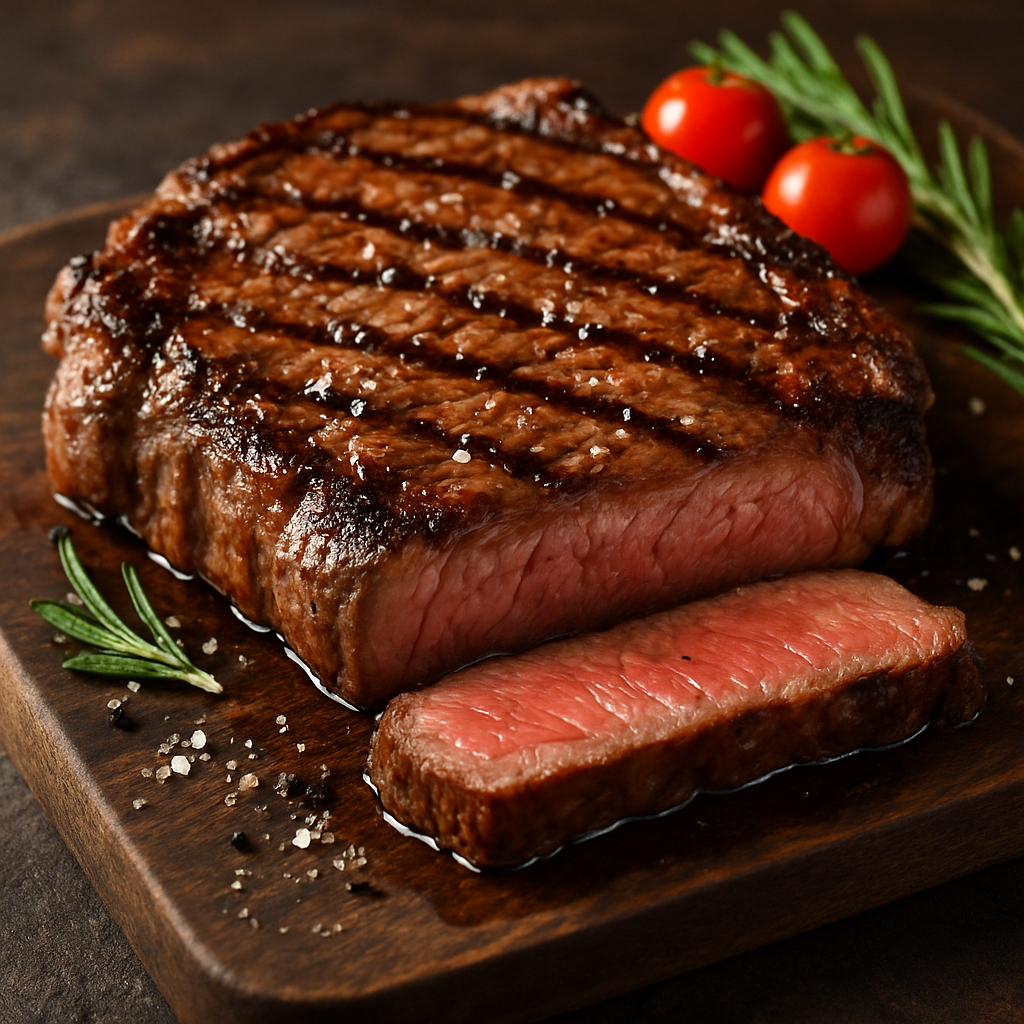
Table of Contents
Intro: The Emotional Journey of Cooking the Perfect Steak
Imagine the sizzle of a perfectly seared beef steak, its crust glistening with flavor, the inside a tender pink that melts in your mouth.
Now, recall the heartbreak of serving a charcoal-like slab that even the dog snubs. You’re not alone—70% of home cooks admit to overcooking steak at least once (Food Network, 2023).
But here’s the good news: mastering beef steak isn’t reserved for chefs in white hats.
Steak has been a culinary icon for centuries, from ancient Rome’s bovem assum to modern-day steakhouse luxe.
Today, it’s a symbol of celebration, romance, and indulgence. Whether you’re impressing a date or treating yourself, this guide will transform you from kitchen rookie to beef steak savant.
After years of trial, error, and a few smoke alarms, I’ve distilled everything into this masterclass. Let’s dive in!
Chapter 1: Choosing the Right Cut of Beef
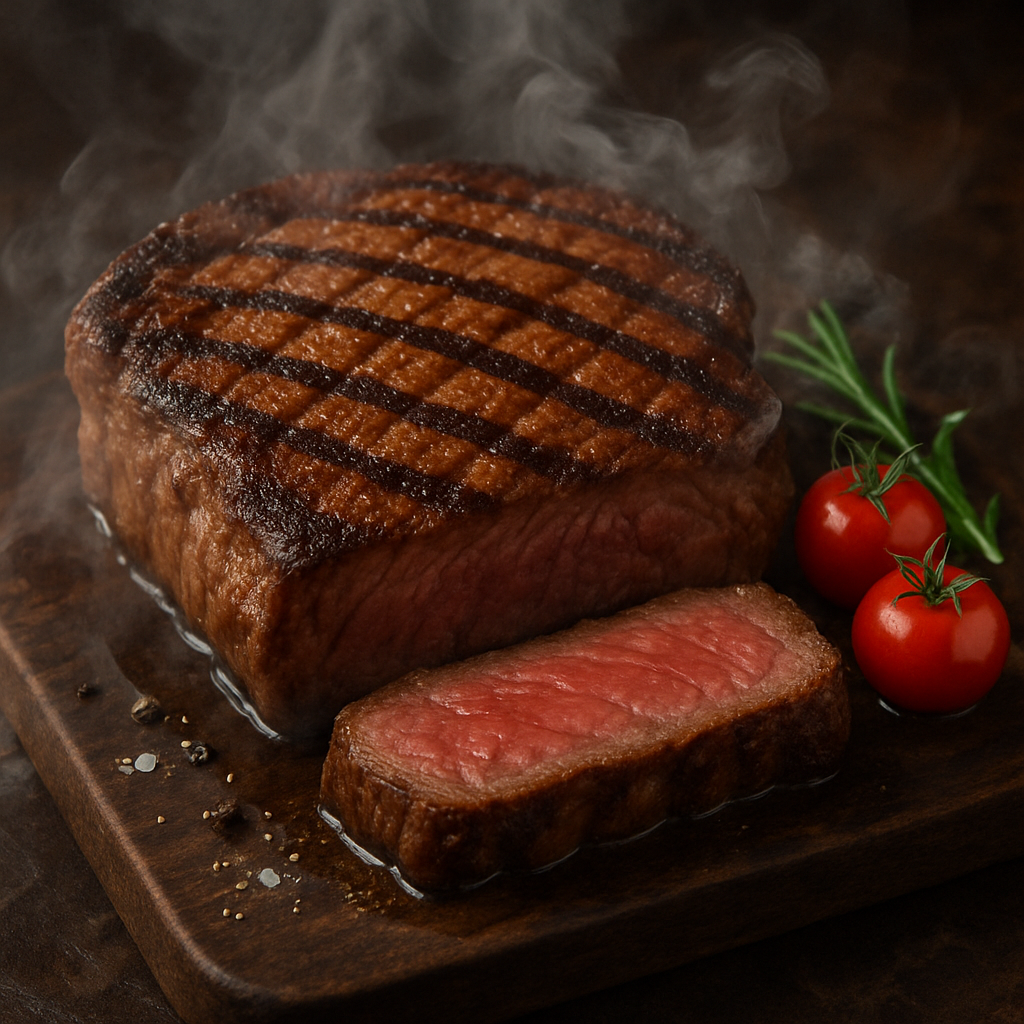
Understanding Grades and Types
Not all beef steaks are created equal. The USDA grades beef into three categories:
- Prime: Highest marbling (8–13% fat), found in steakhouses.
- Choice: Moderate marbling (4–8%), ideal for home cooking.
- Select: Leanest (2–4%), best for marinating.
Popular Cuts Demystified:
- Ribeye: The king of flavor, with rich marbling. Best for grilling or pan-searing.
- Filet Mignon: Lean and tender, but lacks fat. Wrap in bacon or slather with herb butter.
- NY Strip: Balanced texture, perfect for beginners.
- Hanger Steak: A budget-friendly gem with bold flavor (called the “butcher’s cut” for a reason!).
Grass-Fed vs. Grain-Fed:
- Grass-Fed: Leaner, earthier flavor, higher in omega-3s. Cook at lower temps to avoid toughness.
- Grain-Fed: More marbling, buttery taste. Ideal for high-heat methods.
Pro Tip: Ask your butcher for “dry-aged” steaks. The 21–28 day aging process intensifies flavor and tenderness.
Chapter 2: Marinades, Rubs, and Seasoning Secrets
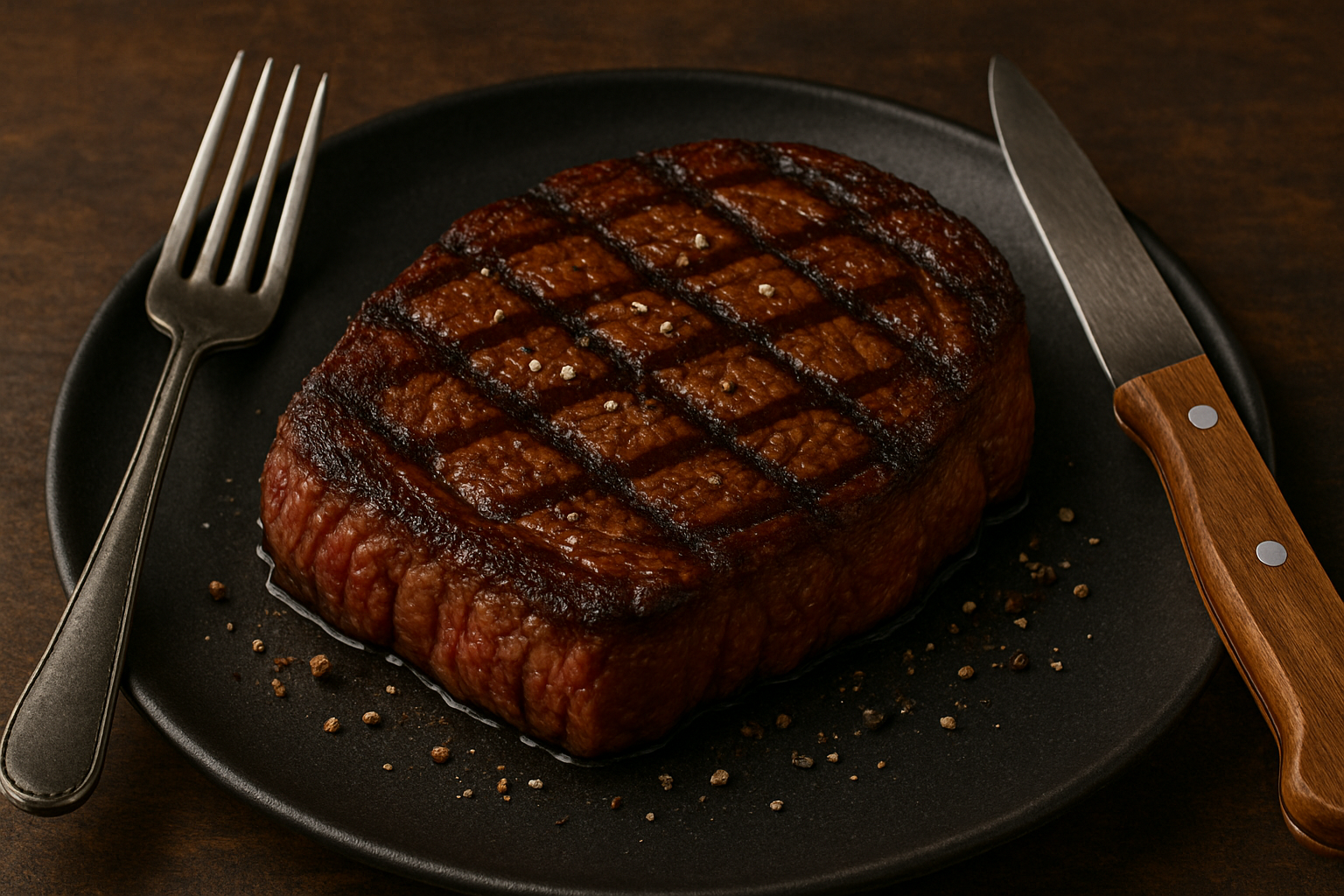
The Science of Flavor
Marinades work via acids (vinegar, citrus) and enzymes (pineapple, papaya) that break down muscle fibers. But over-marinate, and your beef steak turns mushy.
Global Marinade Inspo:
- Korean Bulgogi: Soy sauce, pear puree, sesame oil, garlic.
- Argentine Chimichurri: Parsley, oregano, red wine vinegar, chili flakes.
- Jamaican Jerk: Allspice, scotch bonnet peppers, thyme.
Dry Rubs for Crust Lovers:
- Coffee-Chili Rub: Ground coffee, smoked paprika, brown sugar.
- Classic Steakhouse Blend: Kosher salt, black pepper, garlic powder.
2023 Trend Alert: Searzall torches surged by 40% in home kitchens this year, proving foodies love playing mad scientist for that caramelized crust.
Chapter 3: Cooking Methods Demystified
Pan-Searing: The Stovetop Symphony
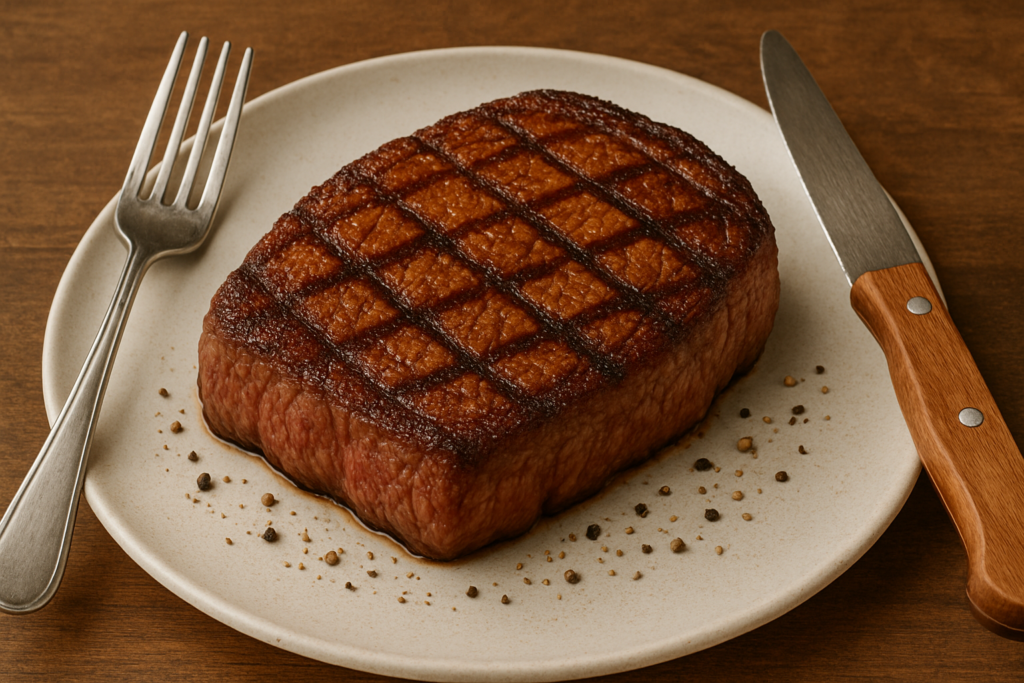
- Equipment: Cast-iron skillet (retains heat), avocado oil (smoke point: 500°F), tongs.
- Steps:
- Pat the beef steak dry—moisture is the enemy of crust.
- Sear 2–3 minutes per side. Baste with butter, garlic, and rosemary.
- Finish in a 400°F oven for even cooking.
Grilling: Backyard Brilliance
- Two-Zone Fire: Direct heat for searing, indirect for finishing.
- Wood Chips: Mesquite for boldness, cherrywood for sweetness.
Sous-Vide: Precision Cooking
Vacuum-seal beef steak, cook in the water bath (130°F for medium-rare), then sear. Foolproof but time-consuming
Reverse Sear: Low and Slow
Bake beef steak at 275°F until 10°F below target temp, then sear. Perfect for thick cuts.
Pro Tip: 52% of home cooks now use meat thermometers (Statista, 2023). Target temps:
- Rare: 120°F
- Medium-Rare: 130°F
- Medium: 140°F
- Well-Done: 160°F (but please, don’t do this).
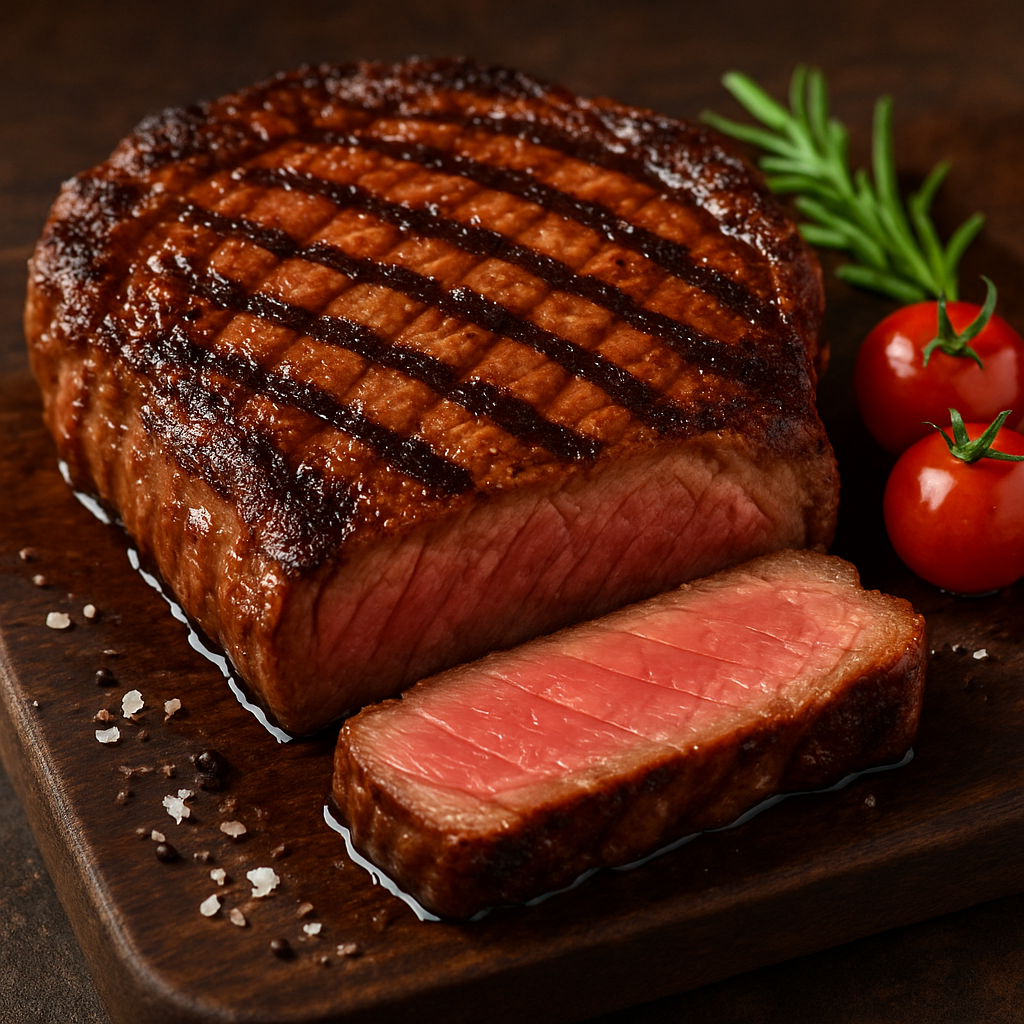
Chapter 4: Common Mistakes and Fixes
- Skipping the Rest: “Let the beef steak rest—it’s non-negotiable!” barks Gordon Ramsay. 5–10 minutes lets juices redistribute.
- Overcrowding the Pan: Steam, not sear. Give steak room!
- Using Olive Oil for Searing: Swap for avocado or grapeseed oil.
- Cutting with the Grain: Slice against the grain for tenderness.
Troubleshooting:
- Undercooked? Finish in the oven.
- Overcooked? Thinly slice for tacos or stir-fry.
Chapter 5: Tools of the Trade
- Thermometer: ThermoPop for accuracy.
- Knife: 8″ chef’s knife for clean slices.
- Cast-Iron Skillet: Lodge brand for even heat.
- Grill: Pellet grills for smoky flavor.
Sustainability Tip: Opt for locally sourced, grass-fed beef. Reduces carbon footprint by 30% (Environmental Working Group, 2023).
Chapter 6: Pairings and Sides
- Wines: Cabernet Sauvignon (bold cuts), Pinot Noir (lean cuts).
- Sides: Garlic mashed potatoes, grilled asparagus, truffle mac ‘n’ cheese.
- Sauces: Béarnaise, blue cheese cream, or spicy mango salsa.
FAQs: Your Burning Questions, Answered
Q: Can I cook frozen steak?
A: Yes! Thaw in the fridge overnight or cook from frozen (add 50% more time).
Q: Is steak keto-friendly?
A: Absolutely! Zero carbs, high protein. Pair with cauliflower mash.
Q: How do you cook steak for a crowd?
A: Reverse-sear multiple steaks in the oven, then finish on the grill.
Final Thoughts: Confidence is Key
Even Julia Child burned a beef steak or two. Remember: Patience, heat, and a dash of courage. Now, go forth and search like a boss!
Hungry for More? Explore our guides on chicken corn soup